Just more than 50 years ago, a unique job opportunity forever changed the lives of a small group of Soldiers.
On an early Sunday afternoon, a group of men sat in a hotel lobby, sharing their military stories over a pile of old photographs. Although years older now, they lit up when they reminisced about their lives on the road, wearing the Aca,!A"black and gold,Aca,!A? and representing the U.S. Army. They move a little slower than they did 50 years ago, but their memories of being Golden Knights are vivid. They were free-fall parachutists who once sat around the drop zone dreaming of the day they could jump, compete and make a living doing something they loved.
Pioneers
In April 1958, Army Regulation 95-19 was published, officially authorizing Soldiers to participate in the sport of free-fall parachuting, which opened the door to many who enjoyed the sport. Over the next two years, several sport parachuting clubs were formed at Fort Campbell, Ky., and Fort Bragg, N.C. Soldiers from the two clubs and other military airborne contingencies formed a special team and competed internationally in the Second Adriatic Cup in 1959 at Tivat, Yugoslavia. This all-Army U.S. National team placed fourth out of 14 nations, the highest placement ever achieved by any previous U.S. team. The Army recognized the worldwide publicity potential and the need for a unit to exploit the sport of parachuting. The Strategic Army Corps Sport Parachute Team was born.
The team was the vision and hard work of Brig. Gen. Joseph Stilwell Jr. He was responsible for gathering Soldiers to form the initial competition team in 1959. The team based their headquarters at Fort Bragg, N.C., where it still exists today.
The 19 original Soldiers assigned to the unit in 1959 became part of the STRAC team. Aca,!A"The team that evolved was made up from all of those sport parachute clubs,Aca,!A? noted Roy Martin, the teamAca,!a,,cs first executive officer. Aca,!A"During the Cold War, everything hinged on beating the Russians. The reason the STRAC parachute team was so important, was they were the team competing against the Russians. That grew a tremendous amount of support for the team.Aca,!A?
It was a dream come true for many of those in the world of sport parachuting who, in 1958, set their sights on being able to compete as Soldiers. Aca,!A"We were ambassadors for not just the Army, but for America,Aca,!A? Martin said. He recalled being told by Stilwell, Aca,!A"remember always you are Soldiers first, and parachutists second.Aca,!A?
The newly formed STRAC teamAca,!a,,cs first demonstration was at a show in Danville, Va., Nov. 1, 1959. The teamAca,!a,,cs first full year was loaded with accomplishments. In 1960, the STRAC parachutists captured the top three places in the U.S. National Championships. But the biggest accolade for the team came June 15, 1961, when the Department of Defense announced that the STRAC team would become the U.S. Army Parachute Team. This recognition meant that the team would be one of three authorized DOD aerial demonstration teams, along with the Air Force Thunderbirds and the Navy Blue Angels.
Original member Dick FortenburyAca,!a,,cs (1959 to 1964) position on the team came as a Aca,!A"special duty assignment.Aca,!A? Close to the end of his enlistment, he was asked to reenlist to continue his career with the STRAC team. Aca,!A"We didnAca,!a,,ct know it was going to be this big,Aca,!A? said Fortenbury, alluding to the teamAca,!a,,cs evolution. Aca,!A"It was nice to give them a base and a platform to start out with.Aca,!A? Fortenbury was the first person to make a dead center landing in 1960. Aca,!A"The Russians had silk parachutes, we had nylon. We came down a lot faster than they did,Aca,!A? he added.
Bob McDonald was competing in the 1959 nationals as a civilian from California. During the meet, Stilwell told him there would be an Army parachute team someday, and according to McDonald, the general wanted to see him on it. Aca,!A"I joined the Army, which was the sticklerAca,!A|I went through training and got orders to go on the Army Parachute Team.Aca,!A? McDonald was involved in the teamAca,!a,,cs first plane crash in 1961. A large military aircraft (C-123) crashed on take-off as the team was preparing for a demonstration in Wilmington, N.C. One team member was killed and several critically injured, including McDonald who spent three years in the hospital. Despite his injuries, he still supported the team and returns to reunions. Aca,!A"We had a good bunch of guys, we had good times,Aca,!A? said McDonald. Aca,!A"It was an excellent experience. I was feeling something big was going to happen.Aca,!A?
Research and development
The 1960s was a decade of research and development for the team. Aca,!A"We used our own gear, we used our own cars to travelAca,!A|we stayed in private homesAca,!A|and in one case we stayed under a bowling alley. These were the things we did to get the team going,Aca,!A? said Jerry Borquin (1960 to 1965). Aca,!A"We had the camaraderie and helpfulness of each person to each otherAca,!A|we actually worked together as a team.Aca,!A? When asked about memorable moments Borquin added, Aca,!A"we did our own test and evaluation, we did our own R and D (research and development). We modified parachutes. We all worked together; if somebody found something that didnAca,!a,,ct work heAca,!a,,cd share it with the other jumpers. Everybody would benefit, primarily for the safety aspect.Aca,!A?
On Dec. 19, 1961, the Conquistador TU competition chute was developed by the team and patented. That same year, the team introduced the cutawayAca,!"a maneuver used in shows where the jumperAca,!a,,cs parachute appears to fail and is released, at which time the jumper deploys another chute.
In 1962, the team moved their winter training to Yuma, Ariz. The warmer climate gave the team the opportunity to train during the colder months, which eventually allowed them to break world records and earn 19 victories in competition. Later that year, on Oct. 15, they earned the nickname that characterized their powerful domination of the sport: Golden Knights. It was an easily recognized, distinctive name, symbolic of the team itself: Gold, the brilliant color of the team, combined with the all-conquering Army Knight, produced a symbol that would stand for a unit ready to do Aca,!A"battleAca,!A? on the competitive fields of international parachuting. (Later, the gold team color would be symbolic of the number of gold medals the team earned). By 1963, the team had 48 new World Accuracy records. For the first time in U.S. history, the Soviet Union parachutists were second to the U.S. Army Parachute Team in both the competitive and record breaking fields.
Research and development remained key elements for the team. It wasnAca,!a,,ct uncommon for members to jump parachutes they tweaked right on the drop zone. From 1963 to 1969, the team was involved in para-delay techniquesAca,!"a tactical employment of small teams composed of skilled, delayed-fall parachutists, which could also be used in a variety of combat roles. To this day, the team provides direct support to special operations units, offering personalized assistance in maintaining and improving military freefall infiltration skills and techniques during their pre-mission training.
Evolution of the team
As the team grew, so did their demonstrations. The team was divided into two demonstration teams: a black team and a gold team, enabling them to cover more air shows and events. A separate competition team continued to win medals.
The 1970s and Aca,!Eoe80s were decades of change as the team morphed from wearing gold helmets during demonstrations to French leather helmets. They endured numerous uniform changes, began using smaller targets, and even suffered through a fuel shortage in 1973. One of the most significant changes in parachuting for the team happened in 1975, when it switched from jumping the round Para-Commander parachute to the square Strato-Cloud parachute, which offered an easier opening and softer landing.
The teamAca,!a,,cs first relative work competition team was formed in 1975, which provided more opportunities to win gold. In 1977, the teamAca,!a,,cs first female, Cheryl Sterns, signed on. Primarily a competitor, Sterns racked up her share of gold medals and world championships and is still competing worldwide, now as a civilian. Sterns made her most memorable jump early in her career at the Statue of Liberty, where she filled in as a demonstrator in 1978.
Other great monumental jumps for the team include jumping at Mt. Rushmore in 1985, and at the 1988 Olympics in Seoul, Korea.
The following year was an exciting one for the team, which was invited to jump at the Lincoln Memorial as part of the presidential inauguration. Months later, the team broke a military world record when they jumped 45 members from the tailgate of a C-130, creating a giant star.
The team continued to evolve in the 1990s with big-way formations, National Gold Medals, and tandem jumps. Over the next two decades, there were huge leaps in the parachuting world.
Aca,!A"The parachutes got fasterAca,!A|they got smaller and they became zero porosity material which was a huge step in parachuting,Aca,!A? said former team member and competitor Joe Trinko (1991 to 1996). Aca,!A"During the time frame I was there, research and development was prevalent, it was relevant, it was constantAca,!A|the guys were always tweaking their equipment to get the best out of it.Aca,!A?
The team learned a few new techniques in eight-way competition, which helped launch a few big wins. Leaders like six-time world champion Scott Rhodes and others on the team had a Aca,!A"do or dieAca,!A? attitude toward winning, which netted them world records and national gold medals.
With the onset of the tandem rig and the ability to tether two jumpers together came more opportunities. Since then, the team has tandem jumped numerous celebrities, dignitaries and other influential people who were able to experience free-falling from 13,500 feet and share the ArmyAca,!a,,cs message with the rest of the world. Aca,!A"We started the pilot program in 1996, with four Soldiers, including myself,Aca,!A? said Billy Van Soelen (1994-2009). Numerous changes in the tandem rig and the parachute were paramount to the success of the program. The team has jumped celebrities such as Chuck Norris, Ann Curry, Geraldo Rivera, Tiger Woods and former President George H.W. Bush, among others.
One of the most unique events for the team was when four women from the Style and Accuracy team jumped onto the back of four separate bass boats for the Warriors on the Water event at Lake Jordan, N.C. Aca,!A"IAca,!a,,cve had such great times with my teammates, on the roadAca,!A|demonstrating. IAca,!a,,cve been to wonderful placesAca,!A|but my greatest memory on the team is the boat jump,Aca,!A? said team leader Sgt. 1st Class Elisa Tennyson. She is a veteran on the team, now serving her 26th year in the Army. Tennyson has won numerous gold medals, both individually, and with her teammates.
While the team is mostly made up of men, its women continue to leave their mark on spectators. Currently there are 10 women on the team: nine jumpers and one pilot. New team member Sgt. Rachel HaddonAca,!a,,cs first experience demonstrating for the Golden Knights was her most memorable. Aca,!A"The first time I actually went out and did a demoAca,!A|all of a sudden, I realized I donAca,!a,,ct just represent myself, I represent every female in the Army and every single Soldier. I have a huge responsibility now,Aca,!A? said Haddon. Each Golden Knight represents all Soldiers throughout the Army, putting a face to those who serve their country.
As the team celebrates 50 years of excellence, it will continue the mission of demonstrations, tandem jumps and competition in support of the U.S. Army Accessions CommandAca,!a,,cs tactical, operational and strategic goals. Like those who served on the team over the past 50 years, new members will continue the role as ambassadors for the Army.
Aca,!A"The recruiting cycle for the Army goes in phases, this team will continue to demonstrate and show everybody what it is to be a Soldier and all the great things you can do for the Army,Aca,!A? said team commander, Lt. Col. Anthony Dill. Aca,!A"We are given the opportunity to connect America with AmericaAca,!a,,cs Army,Aca,!A? he added. Aca,!A"What better thing to do than to represent our United States Army and to be able to tell the Army story across the United States to even the smallest town and represent those Soldiers that are down range'Aca,!A?
To celebrate their 50th anniversary, the Golden Knights will honor their unique history, all past and present members, fellow Soldiers and the American public throughout the year, each time they jump.
The teamAca,!a,,cs rich history is on display at its headquarters at Fort Bragg, N.C.
For more information on the U.S. Army Golden Knights, visit www.armygoldenknights.com

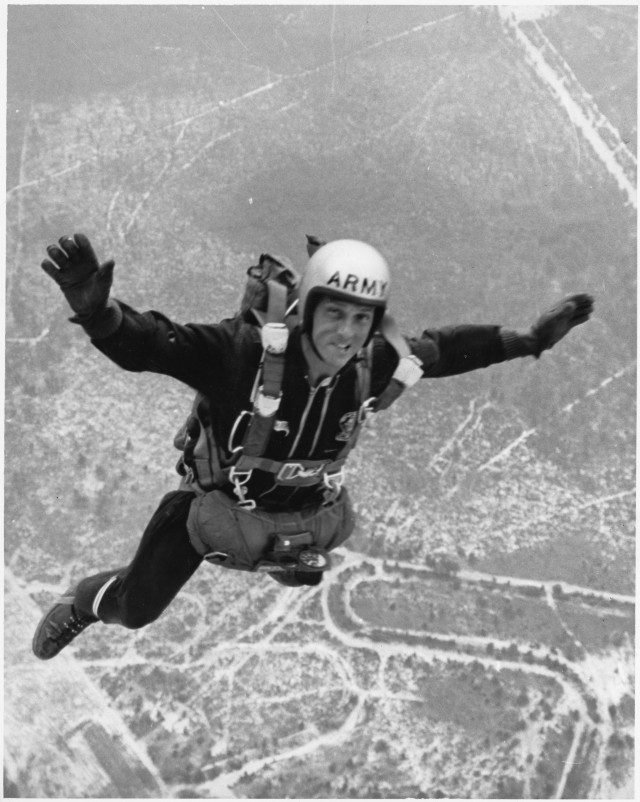
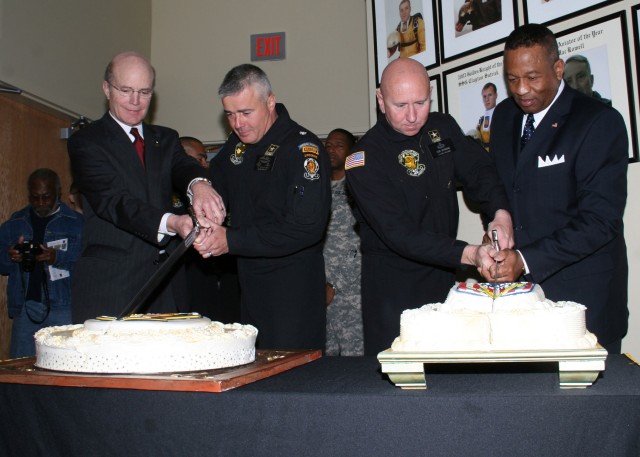


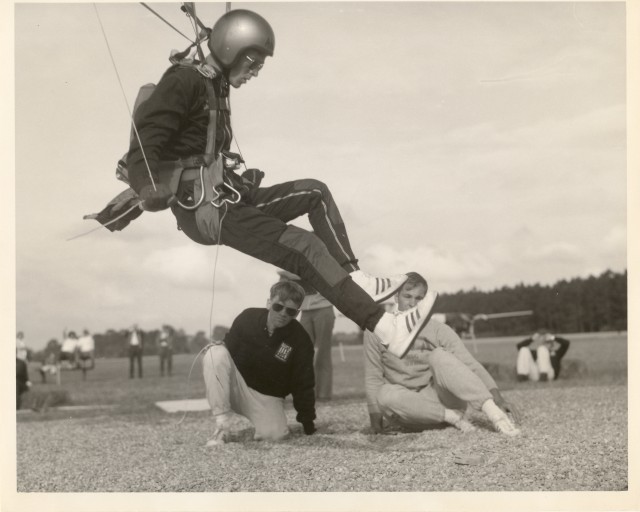

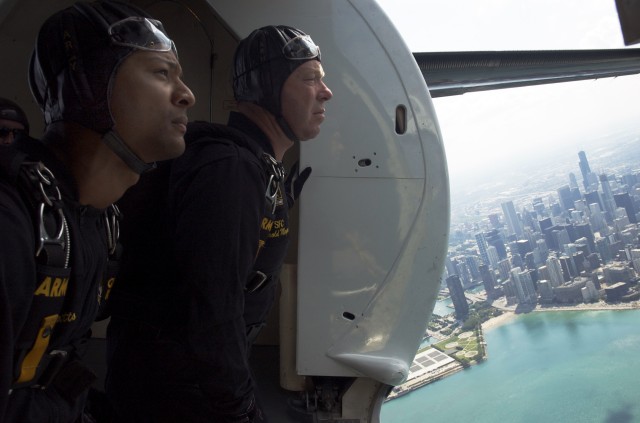

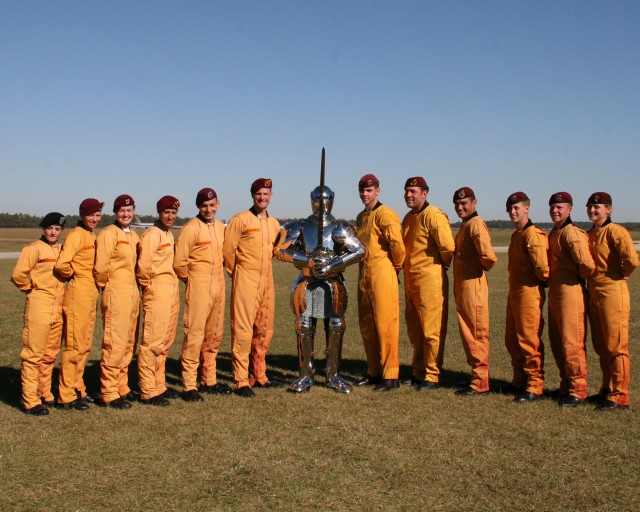


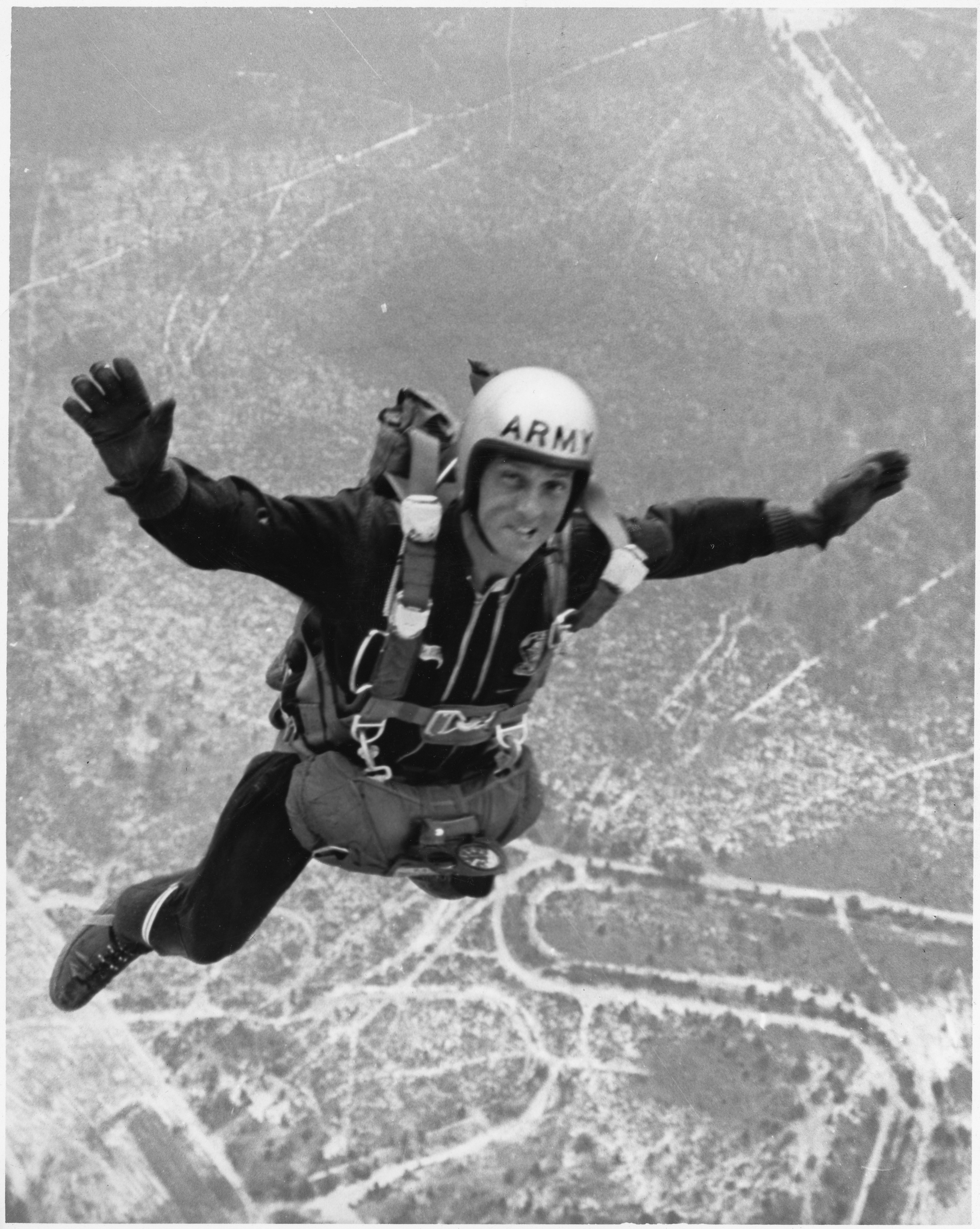

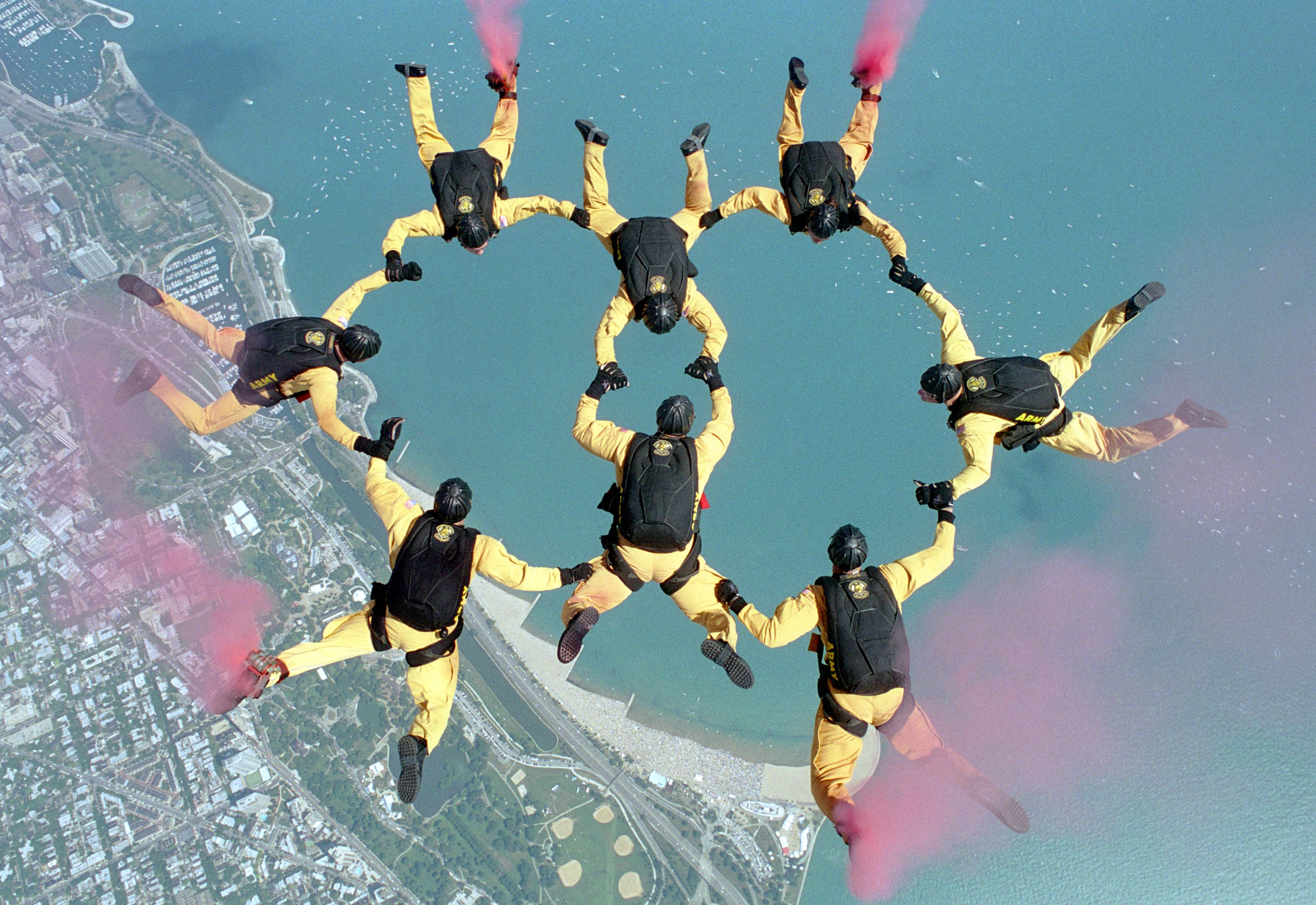



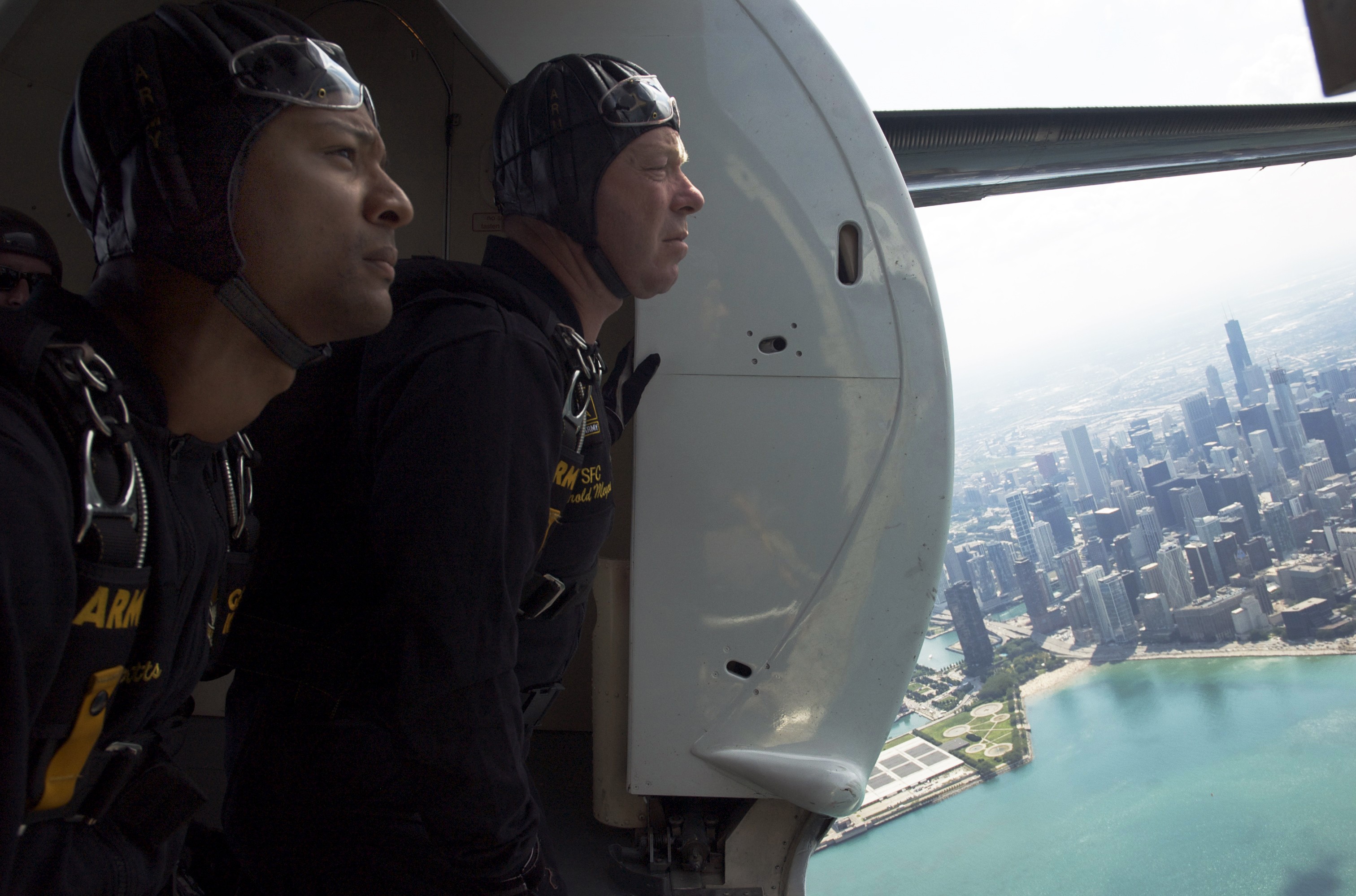

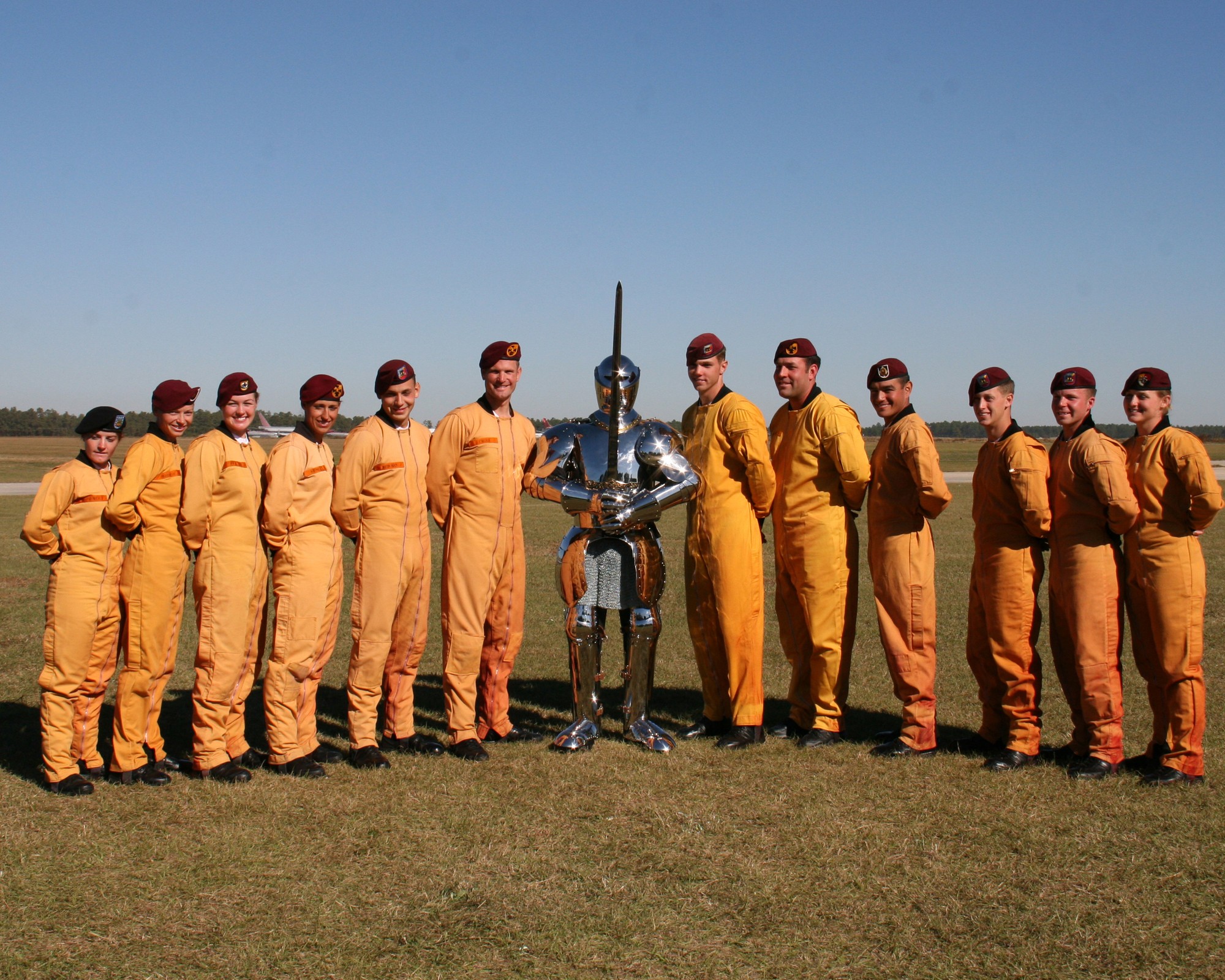

Social Sharing